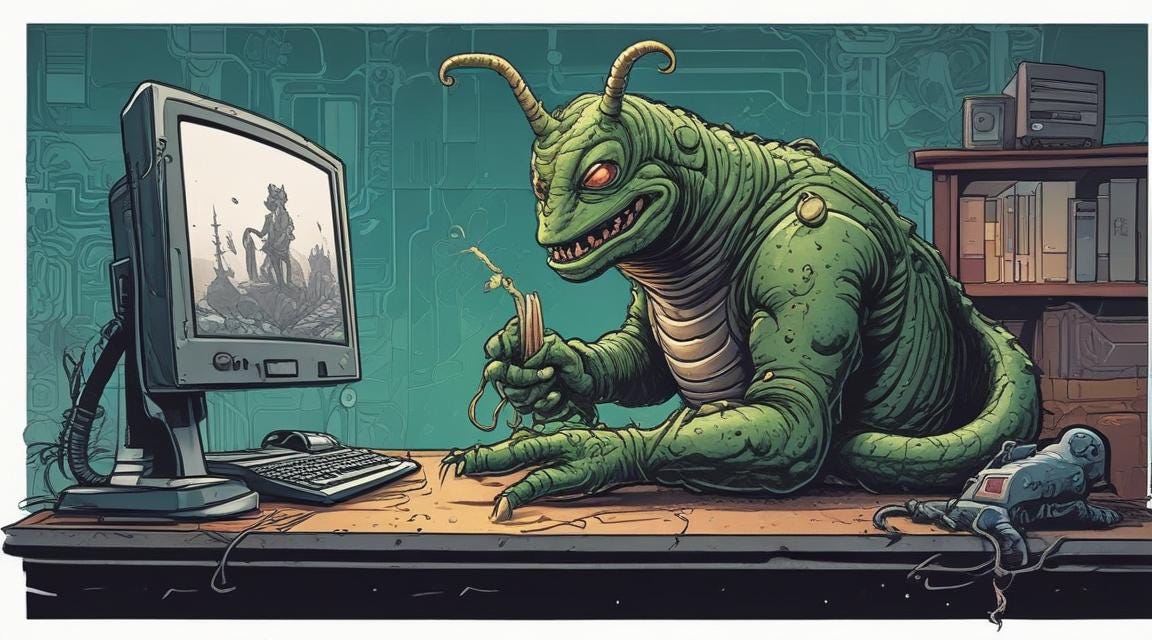Teenaged Mutant Slugs
Or… ‘Do Slugs communicate with each other?
Are you now or were you at some time a parent of a teenager?
Even as I ask this, I know the former will be unlikely to have time or inclination to read this piece. In the midst of a living nightmare, your entire being will be devoted to keeping alive some residue of intellectual credibility and capacity. From this, you hope to rebuild your personality and Life once the mutant creature has left home.
If you fall within the latter camp, you may shudder at the memory. Your offspring survived beyond those troubled years. You remember how the charming and bubbly little boy or girl turned into a surly, nocturnal humanoid for several angst-filled years. But somehow, your genetic legacy overcame the downslide of the teenage years - back towards the Primeval soup from which hominids and ultimately Homo Sapiens emerged.
Scientists sometimes speak about physiological artefacts contained within the modern human body. These are physical features which were useful in a bygone age, but which have little or no up to date purpose. Indeed, they might even be an occasional source of trouble. Your appendix, for instance, is thought to be vestigial – providing nothing but a potential location for food to be trapped and to cause inflammation. While, these days, it is no longer used to digest cellulose, modern scientists allow that it can function as a reservoir of beneficial gut bacteria so you recover quickly from a bout of diarrhea. It’s not entirely useless, therefore.
The muscles to move your ears might be a better example. It’s hard to conjure up some modern use for them. Fascinating your mates at the pub? Hmmn. Maybe not.
The coxxyx or tailbone is another. All mammals have tails, and humans are no different, at least for a month during gestation. But it performs no further function.
Reading this morning’s news of riots in some of Britain’s big cities, it is hard to believe we are still evolving as a species. But the human organism continues to adapt to its environment with startling speed. A few years ago, the anatomist and bone specialist Professor Alice Roberts identified unusual growth in the upper vertebrae of teenagers who spend significant time staring at their smart phones. The muscles which hold their heads in this extended position needed stronger points of attachment.
But I should return to the evolutionary backsliding of the average human teenager. They display several characteristics in common with slugs – bear with me, here.
They are nocturnal. Check.
They communicate with each other by pheromones. Check. (Have you ever wanted to throw open the windows of a teenager’s bedroom to dispel the fug)?
Slugs have diverse diets. Teenagers consume Pot noodles and other substances of uncertain nutritional value. Check.
Slugs are sensitive to their environment – teenagers can tell immediately if you have throttled their access to the WiFi, opened the curtains or turned on a light.
Slugs exhibit unique colouration. The pale and smudged face which glares back when you open the bedroom door to deliver a tray of actual food is certainly unique among humans.
It is true that (most) teenagers do not leave a trail of slime to show which way they went, but perhaps this adaptation has not yet appeared. The attentive parent entering the kitchen in the morning might observe a ‘fridge door left ajar, an open container of food on the counter-top or some similar sign of nocturnal teenaged visitation.
Let us hope with due fervour that the evolutionary backsliding of human teenage years does not develop further.




Whose teen parent has been commiserating to you?